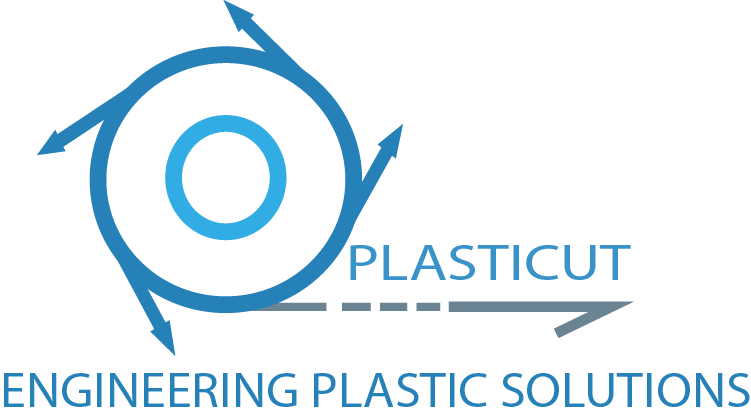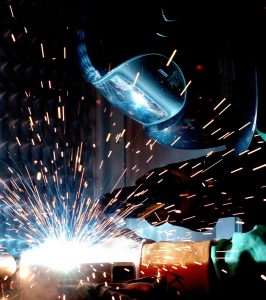Introduction to Welding Plastics
There are several different methods for welding plastic – just like there is for welding other materials. Regarding plastic joining, there are three different methodologies. One can mechanically join plastic, adhesively join plastic, or weld it. Even within these categories, there are several subcategories. For instance, mechanical joining can refer to screws, snap fitting or press fit. Adhesive bonding can include using cross linking, solvents or melting. Finally, welding plastic can be done ultrasonically, with vibration or with heated tools. This article will focus primarily on the welding methods for plastic, as well as the step-by-step process to do so.
Identifying the Plastic(s)
With plastic welding, like nearly all forms of welding, weld only ‘like’ materials. This means that only similar plastics or the same type of plastic can be welded together. Thus, the first step to begin welding is to identify the plastics being used. Many modern, manufactured plastics have identification stamps that can be used to determine the type of plastic. If there is no identification stamp, there are still a number of ways to determine the plastic type. A rod test kit is the easiest way to determine the plastic types.
To use a rod test kit (also known as RTK) clean the test area. There are several different types of contamination that can ruin a test. Following this, a rod that feels the most like the test material should be selected. A small section of the rod should be welded to the plastic and allowed to completely cool. Cooling is critical, as a connection will not be full strength until cold. If the weld can be removed easily with pliers, another rod needs to be selected. If the rod can be snapped off while the weld stays in place, the material is a match – meaning the plastic type has been identified.
Surface Preparation
Like when testing is completed to determine plastic type, contamination needs to be removed from all of the plastic’s surfaces. Washing all parts with specialised chemicals and soaps is a good starting point. For certain contaminants like oil, further cleaning may be needed. Industrial cleaners shouldn’t be used, as they can damage the plastic. Additionally, any paint needs to be removed. The best way to do this is using an abrasive, such as sandpaper. Caution is advised during this process, as certain plastics can be fragile.
Applying the “V” Groove
The “V” groove is a plastic welding technique that ensures a strong bond. A rotary burr is used to create a groove at the site where the plastic will be welded. While the “V” groove is important, there are other factors involved in getting a good attachment. Good surface preparation, great joint interfaces, proper identification, tacking, proper temperature usage and great technique are all contributing factors to successful plastic welding.
Tacking
Tacking is a process that takes place before the welding. There are outcomes of tacking. Firstly, it is used to create good joint interfaces. Secondly, it can be used to ensure that the plastic is properly aligned before welding. For precision jobs, this is critical. Specialised nozzles can make it easier to tack plastic.
Pendulum Welding
Pendulum welding is a technique that works well for some plastic welding scenarios. Primarily, this technique is used when welding hard-to-reach areas or small sections of plastic. To begin, cut the welding rod to help the plastic flow more evenly. The rod is then moved in a back-and-forth motion – by moving the rod in a back-and-forth (pendulum style) motion, an even join can be created. Micro pendulum motions allow for greater control than other methods, resulting in an increase of the tightness and neatness of the weld. This is not the fastest way to join pieces of plastic, which may be a drawback depending on the requirements of the job.
Speed Welding
Speed welding is a technique that allows for longer length welds. As the name implies, this technique is a much faster way to weld plastic than others. Specialised speed welding nozzles make this process more efficient. These tips have external holders for welding rods, which means that both hands can move the welding attachment. This increases control and neatness Over time, this method of welding can be more physically taxing than other types of techniques.
Extrusion Welding
Extrusion welding is the strongest type of welding for plastic materials. The tools required for are much larger than other plastic welding tools. This can make them difficult to handle and heavy. Despite this, the massive strength benefits of extrusion welding makes it worthwhile for many projects. Most plastic welds will require multiple passes. Since heavy materials require more material, extrusion welding is the best way to join heavier materials because more rod is laid down at one time.
Finishing the Weld
Regardless of the welding process used, the finishing process is largely the same. First, it is critical to let the weld cool. Like with any welded material, the plastic weld will not be at full strength until it has cooled entirely. For plastic, the cooling process can take several minutes. Working the new join too soon can ruin the alignment. Once cool, the join should be sanded down, ensuring smoothness. This is the time to remove any abnormal edges, notches or errors. If the join needs to be painted, the join should then be cleaned and dried. From there, the new plastic weld can be painted.
Conclusion
There are a plethora of variations and options to weld plastics together. To ensure a great connection, it is critical to identify the types of plastic that are going to be connected. Using a rod test kit, checking the plastic type is easy. Following identification, the plastic needs to be cleaned thoroughly. Any paint should be removed too. After this, the “V” groove should be created and then tacked. At this point, a proper alignment should be ensured, as it will be impossible to adjust after a correctly completed weld. The three main techniques to weld plastic are pendulum welding, speed welding and extrusion welding. Finally, allow the weld to cool completely. For all your plastic requirements including custom plastic fabrications, contact our experienced team at Plasticut. Contact us for the best plastic engineering solutions. Plasticut can help you with Lexan cut to size, Perspex cut to size, Acrylic cut to size and custom plastic fabrications.


